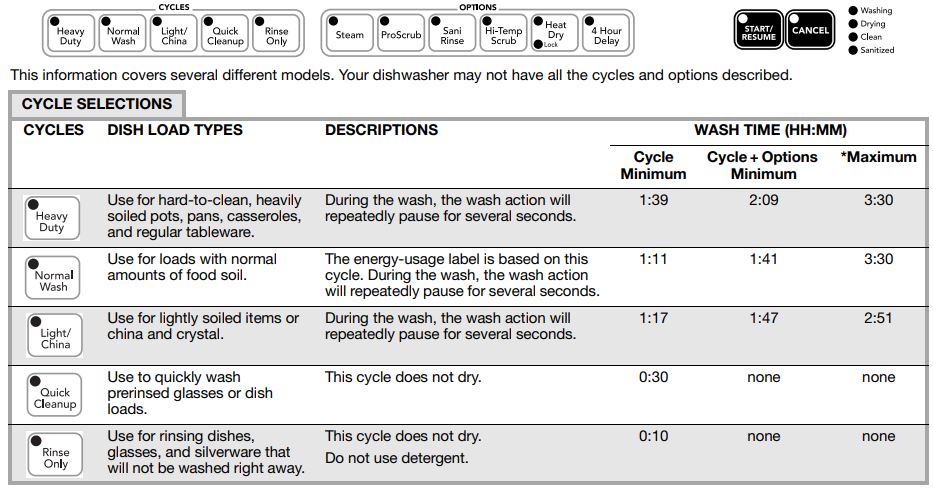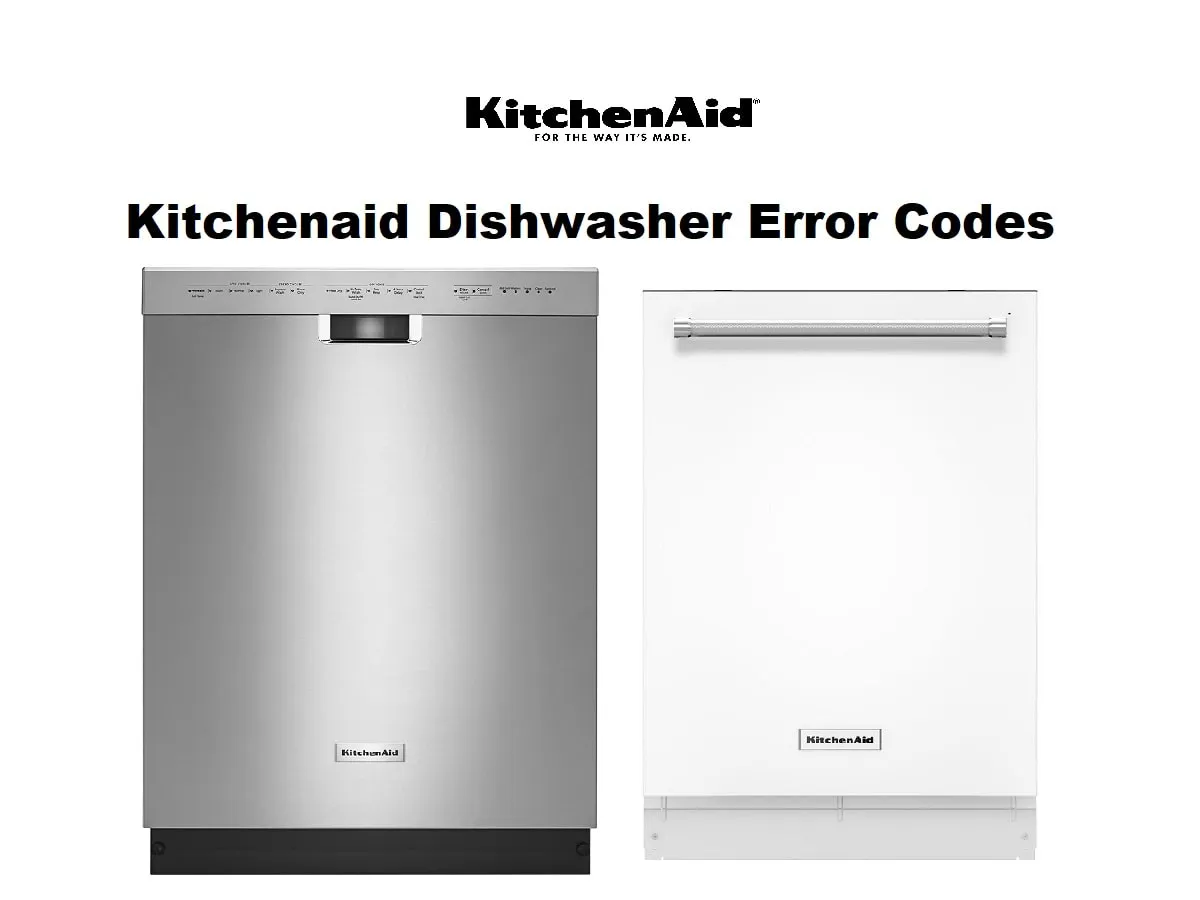KitchenAid is a US-based home appliance corporation owned by Whirlpool corporation. The company came into being in 1919 and was started by the Hobart Manufacturing Company. For starters, the company produced stand mixers and soon faced a great deal of pressure from other appliance manufacturers in the market. After mixers the second appliance the company put out was dishwashers. Introduced in 1959 the dishwashers were a way to offer ease and convenience to everyday Americans.
What started as a single production line and a dishwater setup gained enough attention to start manufacturing other appliances as well. Especially after its sale to Whirlpool the company saw a great number of changes, one of which was the number of appliances offered by the KitchenAid corporation.
Kitchenaid might be a high-ranking company, but from time to time customers have complained about system errors. Fortunately, most of these errors can be fixed on your own. So rather than ignoring the error codes, your appliance is showing its time to note down the KitchenAid dishwasher error code and get to the bottom of the problem. To help you out we have listed down the most common error codes of KitchenAid dishwashers.
Codes List
| Error Codes | Solution |
|---|---|
| 1-1 | Stuck relay on the electronic control board |
| 1-2 | Damaged or corrupted memory on control board. Incompatible software components inside microprocessor. |
| 2-1 | Stuck button on the user interface control |
| 2-2 | User interface control can't communicate with electronic control board |
| 3-1 | Thermistor/OWI sensor failure (The thermistor is the water temperature sensor, the OWI sensor is the Optical Water Indicator that detects the amount of debris in the water.) |
| 3-2 | Shorted thermistor/OWI sensor |
| 3-3 | OWI failed to calibrate or the drain hose check valve failed, allowing dirty water to backflow into the dishwasher |
| 4-4 | Communication error between the electronic control board and the circulation pump motor |
| 5-1 | Door switch failure |
| 5-2 | Control detects door not opening |
| 6-1 | Won't fill |
| 6-2 | Water inlet valve failure |
| 6-3 | Suds or air are in the water pump |
| 6-4 | The float switch is open |
| 6-6 | Incoming water is too cold |
| 7-1 | Heating element doesn't work |
| 7-2 | Heating element won't shut off |
| 8-1 | Slow drain |
| 8-2 | Drain pump electrical problem |
| 9-1 | Electronic control board can't detect the position of the diverter disc |
| 9-2 | Diverter motor is stuck on |
| 9-3 | Diverter disc is missing |
| 9-4 | Lower spray arm error |
| 10-1 | Detergent dispenser failure |
| 10-2 | Vent wax motor electrical problem |
| 10-3 | Drying fan failure |
| F1E1 | Stuck relay on the electronic control board |
| F1E2 | Damaged or corrupted memory on control board. Incompatible software components inside microprocessor. |
| F2E1 | Stuck button on the user interface control |
| F2E2 | User interface control can't communicate with electronic control board |
| F3E1 | Thermistor/OWI sensor failure (The thermistor is the water temperature sensor, the OWI sensor is the Optical Water Indicator that detects the amount of debris in the water.) |
| F3E2 | Shorted thermistor/OWI sensor |
| F3E3 | OWI failed to calibrate or the drain hose check valve failed, allowing dirty water to backflow into the dishwasher |
| F4E4 | Communication error between the electronic control board and the circulation pump motor |
| F5E1 | Door switch failure |
| F5E2 | Control detects door not opening |
| F6E1 | Won't fill |
| F6E2 | Water inlet valve failure |
| F6E3 | Suds or air are in the water pump |
| F6E4 | The float switch is open |
| F6E6 | Incoming water is too cold |
| F7E1 | Heating element doesn't work |
| F7E2 | Heating element won't shut off |
| F8E1 | Slow drain |
| F8E2 | Drain pump electrical problem |
| F9E1 | Electronic control board can't detect the position of the diverter disc |
| F9E2 | Diverter motor is stuck on |
| F9E3 | Diverter disc is missing |
| F9E4 | Lower spray arm error |
| FAE1 | Detergent dispenser failure |
| FAE2 | Vent wax motor electrical problem |
| FAE3 | Drying fan failure |
Control Panel

Troubleshooting

Dishwasher is not operating properly.
Dishwasher does not run or stops during a cycle
- Is the door closed tightly and latched?
- Is the right cycle selected?
- Is there power to the dishwasher? Has a household fuse blown, or has a circuit breaker tripped? Replace the fuse or reset the circuit breaker. If the problem continues, call an electrician.
- Has the motor stopped due to an overload? The motor automatically resets itself within a few minutes. If it does not restart, call for service.
- Is the water shutoff valve (if installed) turned on?
- It is normal for certain cycles to repeatedly pause for several seconds during the main wash.
Dishwasher will not fill
- Is the overfill protection float able to move up and down freely? Press down to release.
Dishwasher seems to run too long
- The dishwasher can run up to 3¹⁄₂ hours depending on soil level, water temperature, cycles and options. Is the water supplied to the dishwasher hot enough? The dishwasher runs longer while heating water. Is the dishwasher cycle time within the cycle times? See cycle sections wash times. A delay automatically occurs in some wash and rinse cycles until the water reaches the proper temperature.
Water remains in the dishwasher
- Is the cycle complete?
Detergent remains in the covered section of the dispenser
- Is the cycle complete?
- Is the detergent lump-free? Replace detergent if necessary.
- Is the dispenser door blocked by dishes or cookware when the dishwasher door is closed?
White residue on the front of the access panel
- Was too much detergent used?
- Is the brand of detergent making excess foam? Try a different brand to reduce foaming and eliminate buildup.
Odor in the dishwasher
- Are dishes washed only every 2 or 3 days? Run a rinse cycle once or twice a day until you have a full load.
- Does the dishwasher have a new plastic smell? Run a vinegar rinse as described in “Dishwasher Care.”
Condensation on the kitchen counter (built-in models)
- Is the dishwasher aligned with the countertop? Moisture from the vent in the dishwasher console can form on the counter. Refer to the Installation Instructions for more information.
Grinding, grating, crunching or buzzing sounds
- A hard object has entered the wash module (on some models). When the object is ground up, the sound should stop. If the noise persists after a complete cycle, call for service.
Cleaning the Dishwasher
Clean the exterior of the dishwasher with a soft, damp cloth and mild detergent. If your dishwasher has a stainless steel exterior, a stainless steel cleaner is recommended.
Clean the interior of the dishwasher, with a paste of powdered dishwasher detergent and water or use liquid dishwasher detergent on a damp sponge to clean the cooled-down interior.
A white vinegar rinse may remove white spots and film. Vinegar is an acid, and using it too often could damage your dishwasher.
Put 2 cups (500 mL) white vinegar in a glass or dishwasher-safe measuring cup on the bottom rack. Run the dishwasher through a complete washing cycle using an air-dry or an energy-saving dry option. Do not use detergent. Vinegar will mix with the wash water. If you have a drain air gap, check and clean it if the dishwasher isn’t draining well.

